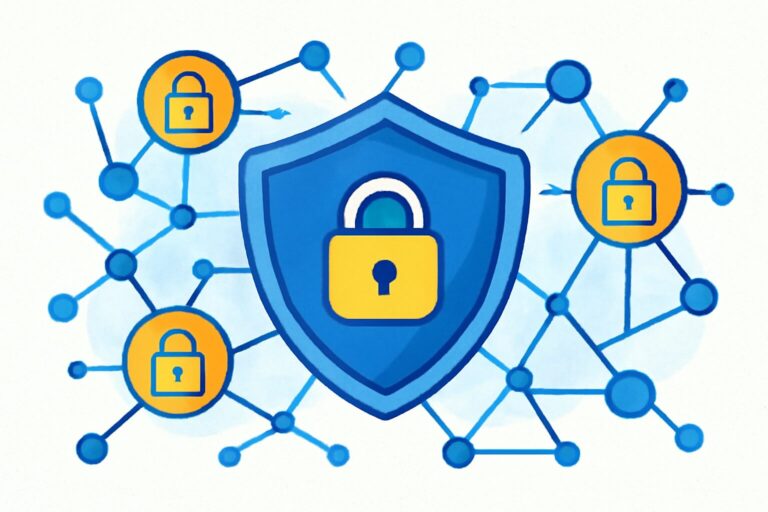# Internal Security Risk Prevention in Enterprises: Key Details Beyond Hacker Attacks
In today’s fast-paced digital era, managing **internal security risks** within enterprises extends far beyond traditional hacker attacks. In fact, many vulnerabilities stem from nuanced internal factors, which if not properly supervised, can lead to anything from information leakage to operational paralysis and huge financial losses. This article delves into the critical details of enterprise security—from physical security to smart device management—offering a comprehensive guide to reinforcing your enterprise’s security defenses.
—
## Physical Security Management: Risks of Inadequate Server Room Access and Surveillance
When people think of enterprise security, network intrusions or malware often come to mind first. However, about 35% of security incidents originate from insufficient physical access controls (Source: IBM Security Report 2023). The server room, the “heart” of data storage, becomes an easy target if door access and surveillance systems have vulnerabilities.
For instance, without strict door authentication, anyone carrying an access card or tailgating can enter, potentially causing immediate system damage. Blind spots in surveillance are often exploited for equipment theft or tampering.
Enterprises should implement multi-factor authentication such as fingerprints, iris scans or dynamic passwords, paired with intelligent video monitoring systems to detect abnormal activities in real-time. Keeping detailed access logs and conducting regular audits can significantly improve physical security. The investment in modern security devices is much less costly than the impact of security incidents.
—
## Employee Security Awareness: Risks of Password Entry and Shoulder Surfing
Employees serve as the first line of defense for enterprise security. Unfortunately, over 60% of data breaches are related to employee behavior (Source: Kaspersky 2022 Annual Report). For example, employees inputting passwords in public places without checking for “shoulder surfers” risk password leakage.
More critically, using simple or reused passwords, or jotting passwords down on sticky notes, opens backdoors for hackers. Employees often underestimate these details, assuming “I have been careful, nothing will happen,” but the truth is otherwise.
Regular security awareness training, simulating phishing attacks to test employee responses, and clear security policies are essential. Promoting two-factor authentication—which uses more than one verification method—is both convenient and secure. Building a strong security culture is key to preventing internal data leaks.
—
## Account Password Security: Misconceptions About Sticky Note Passwords and Password Managers
Many companies mistakenly believe password managers alone guarantee security, but these tools can have vulnerabilities. Even worse are passwords written on notes or stored in mobile device memos; if the device is lost or accessed by others, passwords are fully exposed.
Choose reputable and regularly updated password manager products, ensuring strict control of all access privileges. Password complexity should not be compromised, and periodic password changes are crucial to avoid expired credentials.
For example, a financial institution once lost millions due to inadequate password management. Investigations showed attackers accessed unencrypted password memos on an employee’s phone. This incident serves as a serious warning for all enterprises.
Passwords are not a cure-all; proper use of technology combined with heightened awareness is equally important. Multiple preventative measures will fortify internal networks.
—
## Smart Device Control: Potential Threats from Wearables and Smart Endpoints
The wide adoption of smart devices—such as wearables (smart watches, smart glasses) and various smart terminals—brings great convenience to digital office environments. However, they also pose hidden security threats. According to Gartner, data breaches caused by smart devices grew by 20% in 2023.
For instance, smartwatches commonly connect via Bluetooth to smartphones; without strong security, attackers could intercept data transmissions or remotely control devices. Some smart terminals contain cameras or microphones that malicious software may exploit for eavesdropping or surveillance.
Enterprises must strictly register and manage smart devices connected to their networks, using endpoint security solutions for real-time monitoring and audits. Restricting smart device usage in sensitive work areas ensures information security.
Neglecting smart device management can create loopholes that bypass traditional network security—this risk must not be underestimated.
—
## Media Devices and Network Tools Management: Vulnerabilities from USB Drives, Personal Emails, and Unencrypted Data
Using USB drives and personal email accounts to transfer data is common in daily office work but is a known weak point for hackers. Reports indicate over 40% of security incidents stem from unauthorized media devices connecting to corporate networks (Source: Verizon Data Breach Investigations Report 2023).
Unencrypted USB drives are direct data exposure if lost. Sending sensitive files via personal emails greatly increases risk. Unencrypted data is akin to “walking naked”; once stolen, consequences are dire.
Companies should deploy automated encryption and Data Loss Prevention (DLP) technologies to prevent unauthorized data leakage. Strict policies on media device and email usage plus regular security audits and employee education are necessary.
Previously, a well-known company suffered a ransomware attack after an employee unknowingly inserted an infected USB drive, causing extensive damage. This painful lesson highlights the importance of persistent vulnerability prevention.
—
## Cleaning and Outsourced Staff Control: Security Risks Behind “Master Keys”
Outsourced and cleaning personnel often hold “master keys” or multi-area access rights in enterprises. Poor management of these can become huge safety hazards. Their wide access and insufficient identity checks raise risks of theft or information leaks.
For example, one company lost major customer trust after a cleaning worker inadvertently photographed confidential documents.
Recommendations include implementing tiered access control for outsourced staff, clearly restricting authority, installing entry monitoring systems, and regularly updating security protocols. Every access should be authorized and documented, combined with periodic safety training and emergency drills.
Strengthening management creates an effective “source control” safety net.
—
## Frequently Asked Questions (FAQ)
**Q1: How can enterprises effectively enhance internal security risk awareness?**
A1: Through regular security education, simulated attack drills, and establishing clear security responsibilities to improve overall staff security literacy.
**Q2: Are password managers secure? How should enterprises choose?**
A2: Their security depends on vendor reputation and technical updates; enterprises should select reputable brands and use them alongside multi-factor authentication.
**Q3: What security impacts come from employees using personal devices for work?**
A3: Personal devices are hard to manage uniformly and prone to malware; enterprises should promote unified device management (MDM) and security policies.
**Q4: How to prevent security risks brought by outsourced personnel?**
A4: Key steps include tiered authorization, strict background vetting, routine security training, and real-time monitoring.
**Q5: What are best practices for smart device management?**
A5: Register devices, apply endpoint protection, restrict usage in sensitive zones, regularly scan for vulnerabilities, and keep security patches updated.
**Q6: How should enterprises mitigate risks from media devices?**
A6: Deploy automatic encryption, limit unauthorized device access, and educate employees to adhere to data protection policies.
—
In an environment filled with growing security threats, focusing on and implementing the above **internal security risk** prevention measures is crucial. After all, security is no small matter; every detail forms a solid shield protecting enterprise assets and reputation. For more professional and customized security solutions, please visit De-Line Information Technology’s official website [https://www.de-line.net](https://www.de-line.net) to safeguard your enterprise and embark on your security upgrade journey today! 🚀🔒
************
The above content is provided by our AI automation poster




